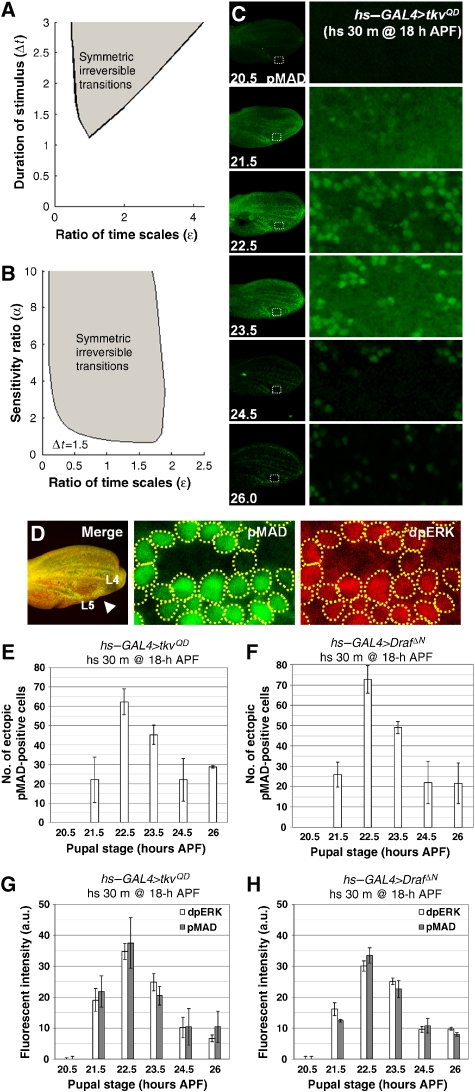Figure 3.
Symmetry in EGFR and DPP signaling dynamics. (A) Plot of parameter space shows that bounded values for ɛ exist for a measured stimulus of duration, Δt, required for ensuring vein fate induction, given that ectopic activation of either pathway is sufficient. The shaded region includes values of Δt and the ratio of time scales, ɛ, that are consistent with symmetric bistable switching from transient activation of either of the two signaling pathways, X or Y. The cross-activation thresholds, σ1=σ2=0.5, the exogenous signal strength (ux or uy), and α are set to 1. (B) Plot of parameter space showing that for a given transient activation of time, ɛ, is bound and centered on 1, even for a large variation in the sensitivity ratio, α. (C) Pupae with transient expression of activated DPP signaling (TKVQD) by hs–GAL4 were heat-shocked for 30 min at 37°C at 18 h APF. Representative pupal wings (left) are shown with pMAD staining of indicated pupal stages and with a higher magnification of the boxed region (right) between L4 and L5. (D) Representative 22.5-h APF pupal wing between L4 and L5 with pMAD and dpERK staining of pupae bearing hsp70–Gal4 and UAS–tkvQD after 30-min heat-shock treatment at 18 h APF. (E, F) Quantification of ectopic pMAD-positive cell number in selected boxed areas at different pupal stages for (E) hsp70>tkvQD (n=3 pupal wings) and (F) hsp70>dRafΔN (n=3), which were heat-shocked at 37°C for 30 min at 18 h APF. (G, H) Quantification of ectopic dpERK and pMAD intensities at different pupal stages of a selected boxed area between L4 and L5 of 18 h APF pupae for (G) hsp>tkvQD and (H) hsp70>dRafΔN that were heat-shocked at 37°C for 30 min at 18 h APF (n=4).

